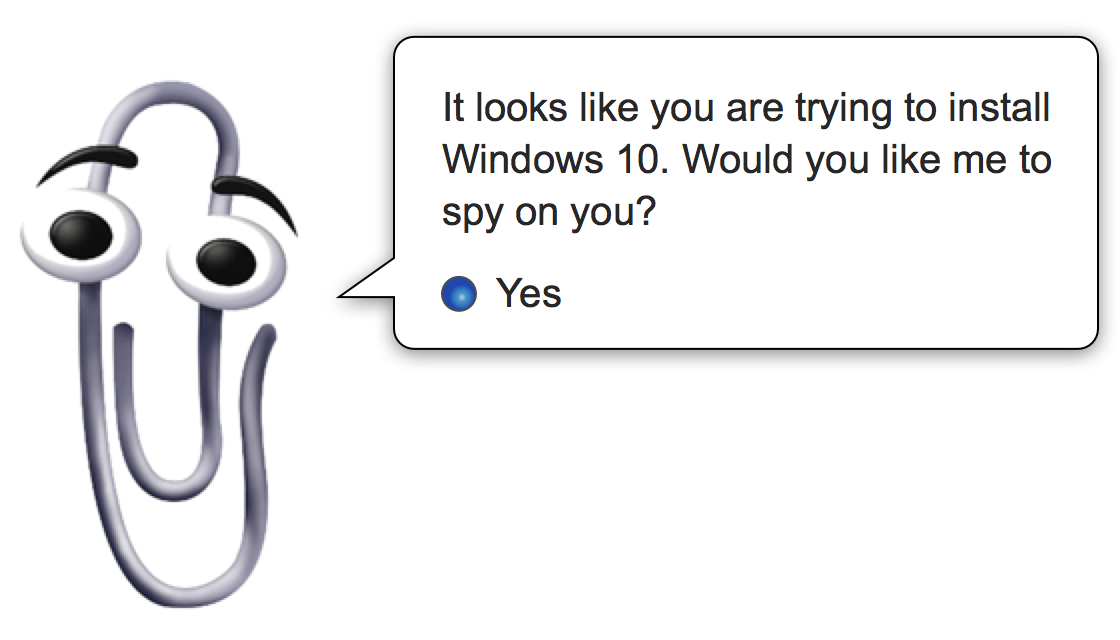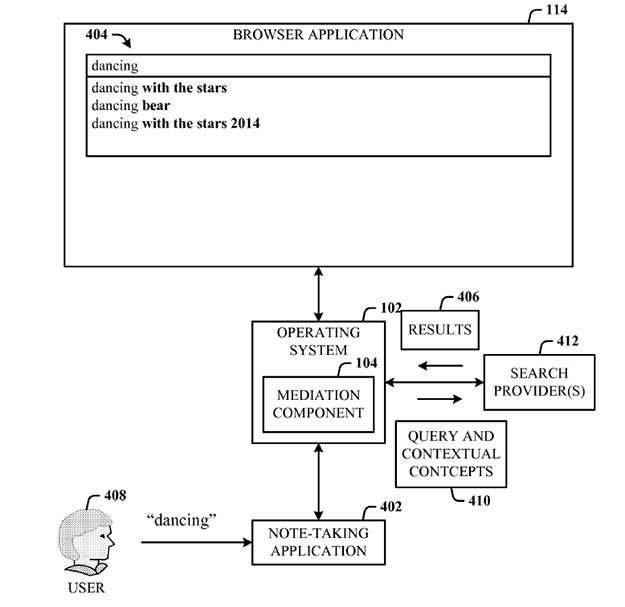Microsoft patents a way to track the user using AI and recording all actions in Windows

“Mediator” - Microsoft’s new Windows 10 component. Perhaps it will look like this
The latest operating system from Microsoft, Windows 10, occupies a growing share of the OS market. This is partly due to the fact that Windows 10 has received the approval of many users. And partly - the fact that Microsoft is trying to actively promote its product. Over the past year, methods for promoting Windows 10 by its creators have been the subject of many discussions in the media.
Another nuance is the transfer of Windows 10 of a large amount of user data to the company's servers. Telemetry in the "top ten" worries a large number of users who have tried to find out why Microsoft has so much data. The corporation, in response, stated that the information received is impersonal and serves only to improve the quality of its software products. But users don't like it all that much. Now the Redmond company risks causing a new wave of discontent. The fact is that Microsoft has applied for a patent for a user tracking method using a new OS component.
The patent is called “ Query Formulation Via Task Continuum .” It describes a method that simplifies data exchange between individual applications in real time. According to the developers of this technology, it will increase the user experience with applications and the entire operating system.
')
Microsoft believes that the current software model, when each application is left to itself and interacts little with its environment, is not very effective. “Due to the fact that the individual programs are practically unrelated to each other, the computing system does not represent what the user needs at a particular point in time,” the patent application states.

As an example, a corporation cites the case when a user makes notes in OneNote on the topic of dance. At the same time, this user is looking for information about dance styles on the web using Internet Explorer. These two applications are usually not connected with each other and do not exchange information, but the corporation offers to fix this.
The company's developers propose to improve the interaction of individual applications with the help of an “intermediate component” or “Mediator” (Mediator). This component plans to make a separate program that will monitor the actions of the user, passing the collected data to other applications and devices of the same person. "Component" will monitor not only the text that the user enters, but also his other actions. For example, for searching for songs on the Web or working with pictures that are stored on a hard disk. In addition, the "intermediate component" will collect data from applications such as Word, Skype, Edge.
“Search service uses contextual ranking to customize the assessment of the proposed search elements. This is done to improve the relevance of the intended search query. The operating system, playing the role of an intermediate component, tracks all text data that is displayed to the user by any applications, and analyzes the data to determine the user's intentions, ”the patent application states.
The corporation claims that this method will speed up the user experience with PCs and search services. Of course, for some users, this method will look like Microsoft’s attempt to officially add a “big brother” to its OS. The “mediator” will actually track all actions that you perform on your computer, collect this information and transfer the data to Bing in real time.
Microsoft once again claims that the system will transmit only impersonal data, but this is unlikely to reassure those users who pay attention to their anonymity on the network and believes that personal data should remain personal.

The patent application describes in detail how all this will work in the Microsoft ecosystem of ecosystems: “For example, in an ecosystem of devices with Windows OS, which may include two or more devices such as, for example, Windows Phone, Tablet Surface Pro, Xbox, operating the system will collect and track data from third-party applications running on the same gadgets, as well as interact with the operating systems of other devices. This is done so that the OS on each particular device “knows” everything about what happens to other ecosystem devices. Scattered data will be collected as a whole. "
Microsoft proposes to make Intermediary an optional module that can be installed in the Window 10 OS environment or integrated into the structure of the operating system.
The fact that Windows 10 collects detailed data about its users has long been known. In 2014, Microsoft published a new privacy statement, stating that the corporation can collect information about the programs used by PCs and laptops with Windows 10 installed, as well as the devices and networks where they work. Such data can be combined with the user ID. Information is also collected about the preferences of a particular person, location, and his interests.

The most actively collects data voice assistant Cortana. The list of servers to which data is sent is extensive. True, if there is such a need, you can disable telemetry in Windows 10.
In the case of the creation of the “Intermediary”, it is he who will collect and send data to the corporation's servers. Probably, the information will be sent even more. Well, and decide whether to work with the "Mediator" or not, users will have to. Most likely, after the appearance of a new OS component, information security specialists will quickly find a way to disable telemetry.
Source: https://habr.com/ru/post/397913/
All Articles